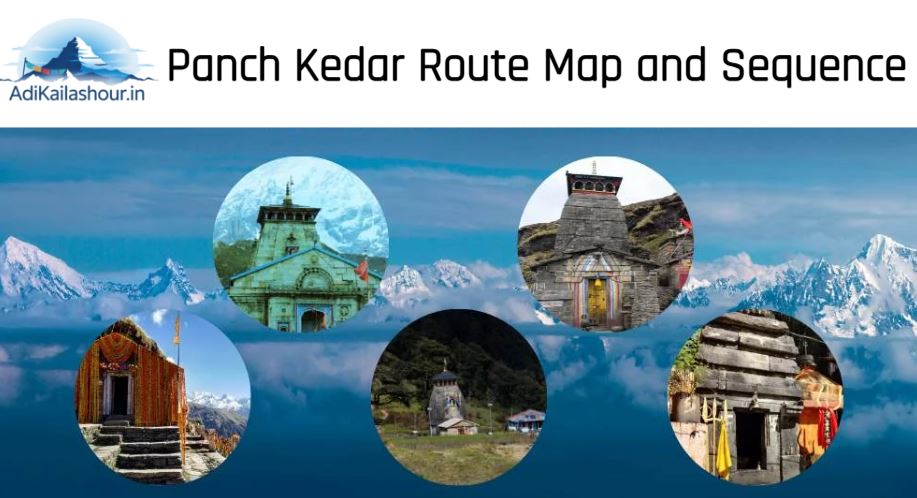The Panch Kedar Yatra is a revered pilgrimage circuit encompassing five ancient temples dedicated to Lord Shiva, located in the pristine Garhwal Himalayas of Uttarakhand, India. The yatra is not only a spiritual quest but also a trekking adventure that offers devotees and nature lovers an immersive journey through breathtaking mountain landscapes, deep valleys, and remote villages. Understanding the Panch Kedar route map and the sequence of temple visits is essential for all pilgrims planning this sacred yatra.
Overview of Panch Kedar Temples
Panch Kedar encompasses five temples, each associated with a part of Lord Shiva’s body according to Hindu mythology. They are:
- Kedarnath: Represents the bull’s hump, the most famous temple and part of the Char Dham circuit.
- Madhyamaheshwar: The location of Shiva’s navel and stomach.
- Tungnath: Represents Shiva’s arms and is the highest Shiva temple in the world.
- Rudranath: Associated with Shiva’s face, located deep in the valley.
- Kalpeshwar: Represents Shiva’s hair and is unique for being open year-round.
Traditional Sequence of the Yatra
Traditionally, the Panch Kedar temples are visited in this order for both religious and logistical reasons:
- Kedarnath Temple: The pilgrimage begins at Gauri Kund near Gangotri, with the sacred trek to Kedarnath located at 3,583 meters.
- Madhyamaheshwar Temple: From Kedarnath, devotees travel to Madhyamaheshwar, nestled amidst thick forests and valleys, symbolizing the body’s navel.
- Tungnath Temple: Next is Tungnath, the highest temple perched on ridges at 3,680 meters, representing Shiva’s arms.
- Rudranath Temple: Then, devotees journey to Rudranath, deep in the forested Himalayan valleys, symbolizing Shiva’s face.
- Kalpeshwar Temple: The yatra concludes at Kalpeshwar situated in a cave near Urgam, gladly accessible throughout the year.
Detailed Route Map and Key Stops
The entire route spans roughly 90 to 110 kilometers and covers diverse terrain including trekking, road travel, and high-altitude trails.
- Rishikesh to Gauri Kund: Beginning the journey by road towards the base camp for Kedarnath trek.
- Gauri Kund to Kedarnath Temple: A 16 km trek leading to the holiest Shiva Jyotirlinga.
- Kedarnath to Guptkashi and Ukhimath: Road travel to prepare for temple visits within the Panch Kedar circuit.
- Ukhimath to Madhyamaheshwar: Trekking through forests and mountain passes to reach the temple.
- Chopta to Tungnath: Short trek to the highest Shiva temple, offering panoramic Himalayan views.
- Chopta/Ukhimath to Rudranath: Remote trekking through serene alpine meadows and forests.
- Sagar to Kalpeshwar: The last leg involves a manageable trek to the cave shrine of Kalpeshwar.
- Return Path: Pilgrims usually return via the same route or proceed to other spiritual destinations such as Badrinath.
Travel and Trekking Tips
- Physical Preparation: The journey includes moderate to strenuous treks with high altitudes, so proper fitness and acclimatization are essential.
- Best Seasons: May to June and September to October offer ideal weather and trail conditions.
- Guides and Porters: Hiring local guides enriches cultural understanding and ensures safety.
- Permits: Obtain necessary trekking and travel permits from local authorities.
- Accommodations: Book lodging well ahead, especially near popular temples like Kedarnath and Tungnath.
- Respect Local Customs: Observe temple rituals, ecological conservation, and local traditions.
Spiritual Significance of the Route
The Panch Kedar Yatra is mythologically associated with penance and redemption, tracing Shiva’s divine manifestations as the Pandavas sought his forgiveness. The pilgrimage imparts spiritual renewal and purification, with devotees often reporting transformative experiences amid the Himalayan serenity. The route itself is a pilgrimage into nature’s grandeur, spiritual lore, and Himalayan culture.
Conclusion
The Panch Kedar route map and sequence embody an age-old confluence of faith, adventure, and nature. Traversing these five sacred shrines of Lord Shiva offers pilgrims an unforgettable spiritual journey along with the privilege of witnessing some of the most spectacular Himalayan landscapes. Careful planning, respect for tradition, and physical preparedness enhance the rewarding experience of completing the sacred Panch Kedar Yatra.

